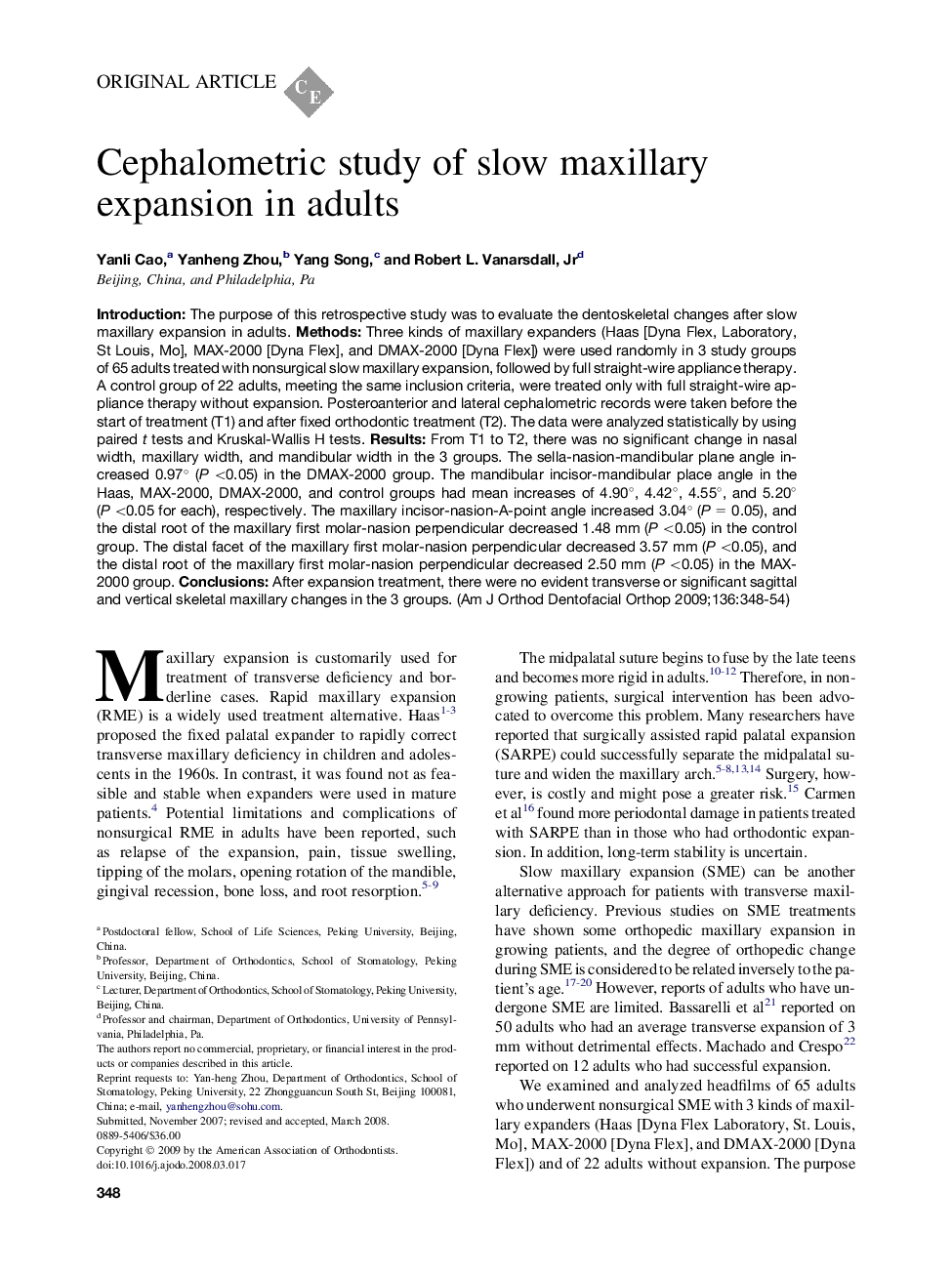| Article ID | Journal | Published Year | Pages | File Type |
|---|---|---|---|---|
| 3118680 | American Journal of Orthodontics and Dentofacial Orthopedics | 2009 | 7 Pages |
IntroductionThe purpose of this retrospective study was to evaluate the dentoskeletal changes after slow maxillary expansion in adults.MethodsThree kinds of maxillary expanders (Haas [Dyna Flex, Laboratory, St Louis, Mo], MAX-2000 [Dyna Flex], and DMAX-2000 [Dyna Flex]) were used randomly in 3 study groups of 65 adults treated with nonsurgical slow maxillary expansion, followed by full straight-wire appliance therapy. A control group of 22 adults, meeting the same inclusion criteria, were treated only with full straight-wire appliance therapy without expansion. Posteroanterior and lateral cephalometric records were taken before the start of treatment (T1) and after fixed orthodontic treatment (T2). The data were analyzed statistically by using paired t tests and Kruskal-Wallis H tests.ResultsFrom T1 to T2, there was no significant change in nasal width, maxillary width, and mandibular width in the 3 groups. The sella-nasion-mandibular plane angle increased 0.97° (P <0.05) in the DMAX-2000 group. The mandibular incisor-mandibular place angle in the Haas, MAX-2000, DMAX-2000, and control groups had mean increases of 4.90°, 4.42°, 4.55°, and 5.20° (P <0.05 for each), respectively. The maxillary incisor-nasion-A-point angle increased 3.04° (P = 0.05), and the distal root of the maxillary first molar-nasion perpendicular decreased 1.48 mm (P <0.05) in the control group. The distal facet of the maxillary first molar-nasion perpendicular decreased 3.57 mm (P <0.05), and the distal root of the maxillary first molar-nasion perpendicular decreased 2.50 mm (P <0.05) in the MAX-2000 group.ConclusionsAfter expansion treatment, there were no evident transverse or significant sagittal and vertical skeletal maxillary changes in the 3 groups.
